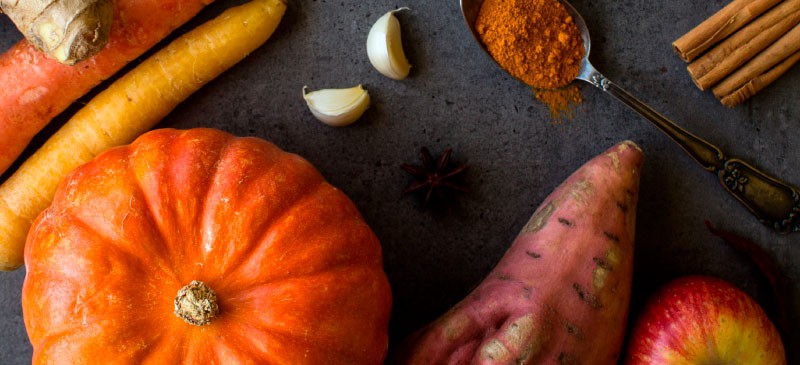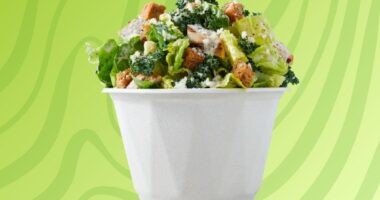
What vegetables are in season for fall? Fall is one of the best times to eat seasonally, considering the abundance of root vegetables, squashes, hearty greens and other fall vegetables that are available.
If you already make an effort to buy in-season produce, you probably know that it tends to be great-tasting, inexpensive and overall good for the planet. Vegetables specifically are important to eat year-round because they’re some of the best sources of antioxidants, vitamins, minerals and fiber.
Throughout autumn, use cool weather veggies such as sweet potatoes, green beans and turnips to make filling soups, dips, salads, easy sheet pan roasted vegetables, casseroles and more.
Top 15 Fall Vegetables
1. Kale
The health benefits of kale certainly make this leafy green a superfood. Loaded with vitamins K, A and C, not to mention several B vitamins, this antioxidant powerhouse is great source of vital minerals too.
2. Sweet Potatoes
Much like the popular fall fruit pumpkin, sweet potatoes are very high in vitamin A plus vitamin C. They provide natural carbs and sugar, which the body uses for energy, plus potassium ands fiber, which support digestion and heart health.
3. Broccoli/Broccoli Rabe
Most types of cruciferous veggies, including broccoli, grow during the fall into the winter, providing you with powerful antioxidants as well as essential minerals and fiber. Broccoli nutrition is particularly high in glucosinolates that have cancer-fighting effects, antioxidants, such as carotenoids, chlorophyll, vitamins E and K, and phenolic compounds.
Rapini is another similar veggie to broccoli, just a bit more bitter and leafier.
4. Brussels Sprouts
Brussels sprouts, which look like small cabbages that grow on a stalk, taste delicious when roasted with some olive oil and sea salt, which brings out their natural flavor. They’re very high in fiber, calcium, potassium, folate, vitamin C and vitamin K.
5. Cabbage
Both green and red cabbages are full of vitamin C, vitamin K, manganese and antioxidants, such as anthocyanins (found in purple and red veggies). Like Brussels spouts, cabbage tastes great roasted. It is also often stewed or boiled.
6. Cauliflower
If you want a low-carb substitute for potatoes or even grains, try diced or mashed cauliflower. It’s a great source of carotenoids, fiber, folate and potassium, plus phenolic compounds that help fight free radical damage and oxidative stress.
7. Carrots
During early fall and again in the spring, carrots tend to peak in taste. They’re an excellent way to boost your intake of vitamin A and carotenoids, which help protect your eyes and skin from cellular damage. Additionally, carrots provide vitamin K, potassium, thiamine, niacin and fiber.
8. Parsnips
Parsnips are root vegetables closely related to carrots, only sweeter and starchier. They’re rich in fiber, vitamin C and also provide magnesium.
9. Turnips
Another root veggie, turnips grow under the ground, where they absorb nutrients and develop starch. They provide you with vitamin K, vitamin A, potassium, vitamin C, folate, copper and manganese.
10. Celeriac/Celery Root
Also called celery root, celeriac is related to both celery and parsley. It has a crunchy texture but softens when it’s cooked, similar to potatoes or turnips. Celery root is a good source of vitamin C, phosphorus and B vitamins.
11. Fennel
Fennel has long been used for digestive support — plus it contains anti-inflammatory, antimicrobial and anti-tumor compounds and antioxidants. It’s rich in phenolic compounds, including bioflavonoids, phenolic acids, tannins and coumarins, plus potassium and vitamins C and A.
READ RELATED: More than a MILLION Americans have been using dry shampoos that may cause cancer
12. Green Beans
A Thanksgiving staple, green beans are at their best throughout the fall. They can be eaten both cooked and raw, such as roasted or dipped into hummus, and are full of vitamins A, C and K; manganese; folate; and fiber.
13. Kohlrabi
Kohlrabi is similar to turnips and also related to cruciferous veggies, including broccoli. This fall veggie is high in vitamin C as well as dietary fiber, providing support for immunity, heart health and digestion. Try roasting it or slicing it raw and adding some to salads or slaws.
14. Artichokes
“Globe” or green artichokes are full of vitamin C and magnesium — plus they contain some iron and even some protein. There are plenty of ways to use them, such as stuffing and baking them or adding the hearts to dips, pasta and pizzas.
15. Arugula
Like other leafy greens, arugula is very low in calories but full of vitamin C, vitamin A, calcium, vitamin K and iron, along with antioxidants, such as polyphenols. Arugula has a peppery taste that’s not too overwhelming, making it great for salads and pestos. It’s also excellent for sautéing and adding to pastas or pizza.
Other fall vegetables to try when the weather gets cooler include:
- Spinach
- Leeks and onions
- Garlic
- Chicory
- Swiss chard
- Endive
Health Benefits
Many fall veggies, and winter vegetables too, are great sources of nutrients, including:
These nutrients support a healthy immune system, digestion and other functions, especially when you need them most during the transition of seasons into the coldest months of the year.
Eating seasonally also benefits local farmers, and the produce is usually fresher, tastier and more nutritious than food consumed out of season.
Health benefits associated with fall vegetables include:
- Helping fight inflammation and free radical damage, which can contribute to many chronic diseases.
- Support for healthy elimination and prevention of constipation.
- Help with managing your appetite, controlling your calories intake and possibly losing excess weight.
- Promoting healthy blood sugar, cholesterol and blood pressure levels.
How to Add to Your Diet
When should you start harvesting fall crops? It really depends on the specific type, since each one peaks in freshness at a different point (such as early or late fall). Many, such as cruciferous veggies and squashes, also grow through the fall and into winter.
Several ideas for using fall vegetables at home in recipes include by:
- Making roasted fall vegetables. In a a 400-degree oven, roast a mix of veggies on a sheet pan for about 30 minutes with olive oil, salt and pepper.
- Whipping up “faux potatoes” using turnips or cauliflower.
- Making vegetable soup or stews, such as sweet potato bisque, fennel soup or creamy broccoli soup.
- Using cruciferous veggies like broccoli and cauliflower to make grain-free “pizza” crusts, plus topping pizza with arugula and artichoke.
- Making pesto or other dips with greens, such as arugula.
- Fixing fall salads with leafy greens, carrots and roasted veggies, such as turnips, sweet potatoes or kohlrabi.
- Using green beans and other veggies to make comforting casseroles.
Give these healthy winter vegetable recipes a try:
Risks and Side Effects
If you are sensitive to FODMAPs (plant foods that contain certain types of carbs that can be hard to digest), then you may need to limit the amount of cruciferous veggies that you eat. Also be sure to drink plenty of water when increasing your fiber intake from vegetables.
If you take medications that affect absorption of nutrients or have inflammatory bowel disease or kidney disease, it’s best to speak with a doctor before adding lots of new veggies to your diet.
Conclusion
- Fall vegetables are those that grow in the cooler months of the year, usually from early September through November.
- Some of the most popular types include cruciferous veggies, like broccoli and Brussels sprouts, sweet potatoes and squashes, carrots, fennel, turnips, celery root, and arugula.
- Benefits of adding these veggies to your diet include supplying you with vitamins C, A and K for immune support; potassium and magnesium; fiber; prebiotics; and various antioxidants.
- Some ideas for preparing them at home include making roasted vegetables, veggie soup and stews, omelets, veggie burgers, stir-fries, and “faux potatoes.”
Source:









